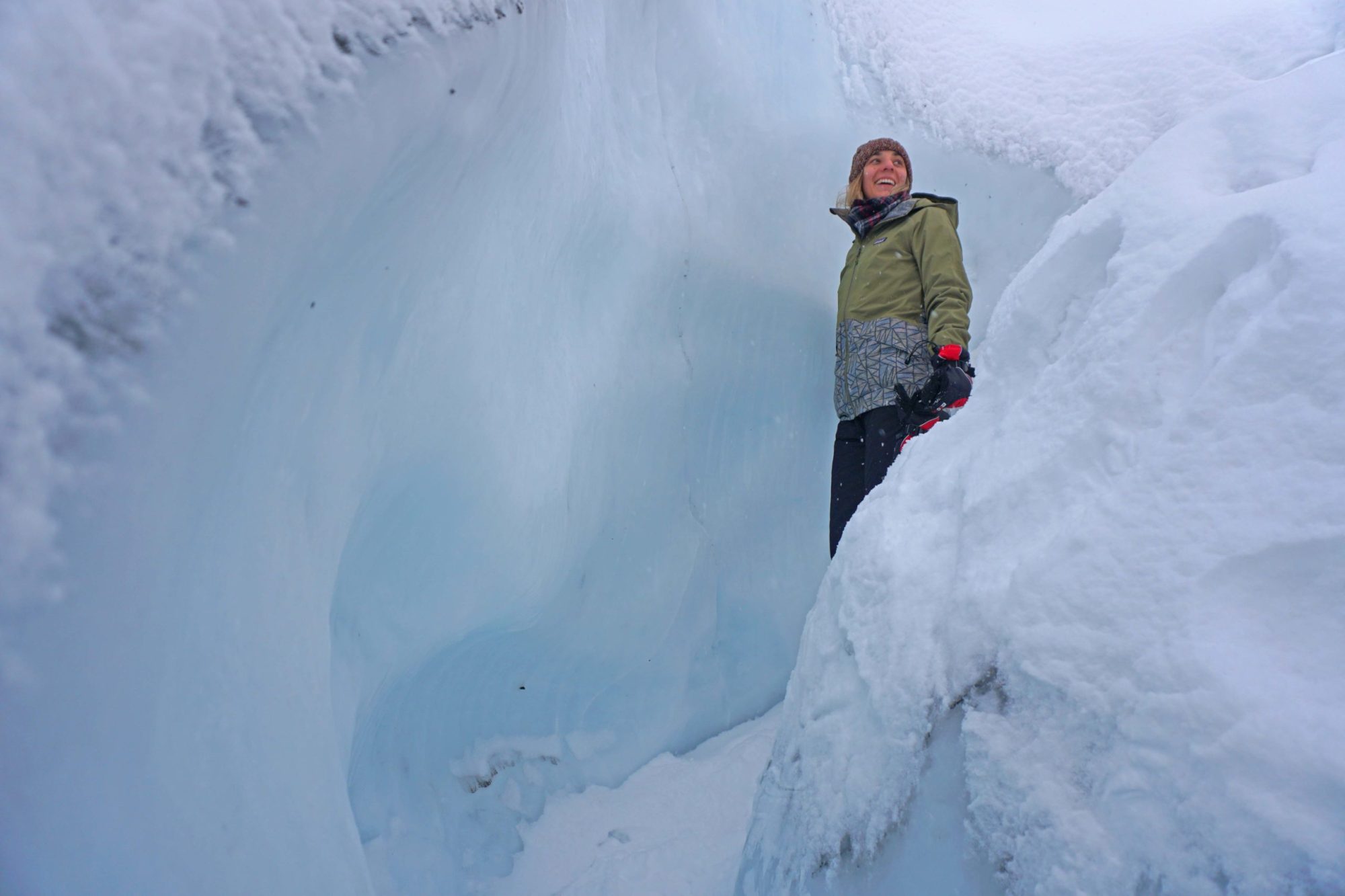Winter Time on a Glacier

Life on a glacier is constantly changing, sometimes faster than others. During the summer you can see glacial changes happen in a matter of hours by means of meltwater and shifting. And in the winter the glacial world moves much slower and offers a different perspective of the ice.
Summertime on a Glacier

Meltwater carves and drains out of moulins that ice climbers explore in the summer
In the summer, glaciers move and change quicker because they are in their ‘melt season’. This is when ice melts faster than it can accumulate due to the consistently higher temperatures of the summer months. You might see large meltwater lakes near the toe of the glacier. The water level of these lakes can rise and fall as daily temperatures fluctuate.
If there is more sun and warmer temperatures, there is more melt that happens. Not only does meltwater influence the lakes but also the rate of ice shifting and carving that the glacier undergoes. Meltwater seeps into weaker facets of ice within the glacier and begins to drill into them. This motion helps to create and shape crevasses and moulins on the glacier.
If you were to take a walk around the glacier in the summer you might notice certain features are navigable in the morning and then submerged in meltwater by afternoon. You can enjoy the many steady streams of pure glacial water flowing from ice features. This can bring you back into canyons and carved out caverns.
Simultaneously, while spotting blue pools and intricately carved natural ice features, you could hear the crash of nearby sheering off a face. The glacier, a river of ice, is at a quicker flow in the summer. And it is easier for us to see with our own eyes just how the glacier moves. Plus, Getting on the ice in the summer gives you the chance to book a private ice climbing and luxury camping experience on the Matanuska Glacier.

Snowmobiling on the mountain above Matanuska Glacier
Winter Glacial Flow
The wintertime on a glacier is a bit slower. This offers a different face of the glacier that many don’t get to see. You do have to face colder temperatures and shorter daytime hours, but they come with some fair trade offs. In the winter you will only experience a fraction of the people that you would in the summer months. Not as many folks are willing to enjoy the cold and outfitters don’t operate as many tours.
You can even take a snowmobile tour out so you can enjoy both the powder snow and the ice. Once on the glacier much of the meltwater is frozen. This is why going with a professional guide is so important.

Helicopter Landing for a Glacier Cave Adventure
The glacier requires more skill to navigate in the winter, where there are more hazards you can’t see. As the ice thickens and solidifies through the winter blue hues start to really showcase themselves. Taking a helicopter out and dropping into an ice canyon is a perfect immersion experience for getting up close and personal to blue ice.
Both seasons lend hand to excellent photography and memorable experiences. The differences in the seasons compliment each other and offer unique glacier opportunities. Catch the Northern Lights in the winter or book a private helicopter experience for the summer. Which season do you think best suits you and your crew?
